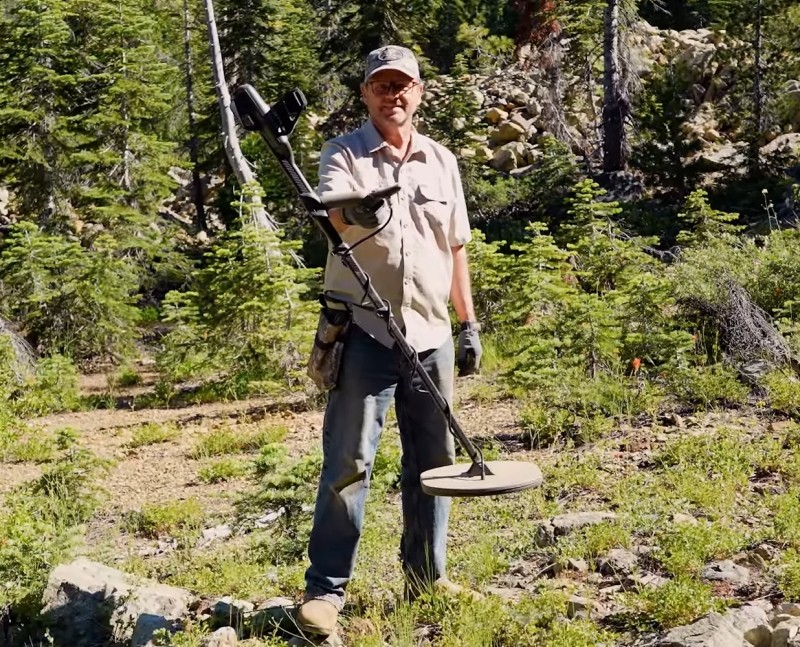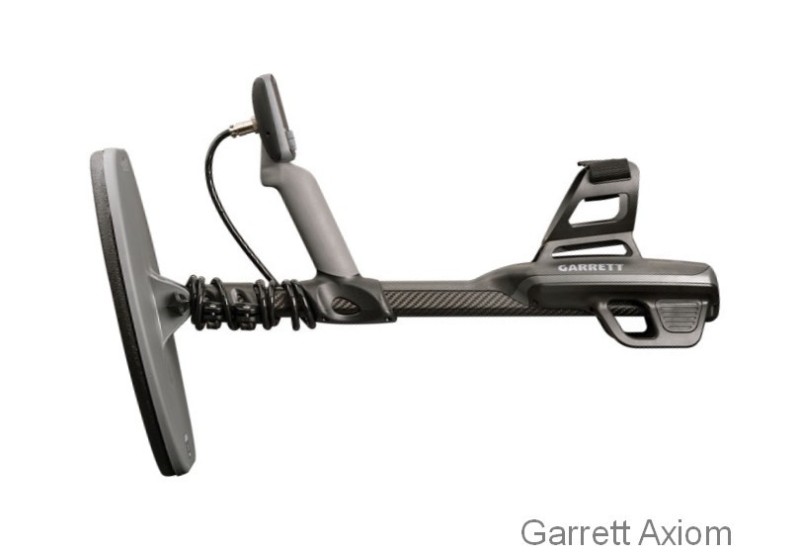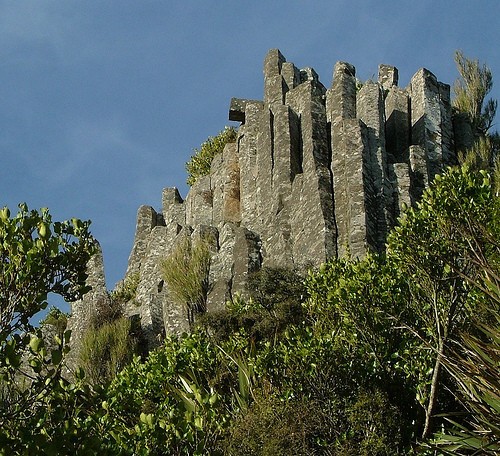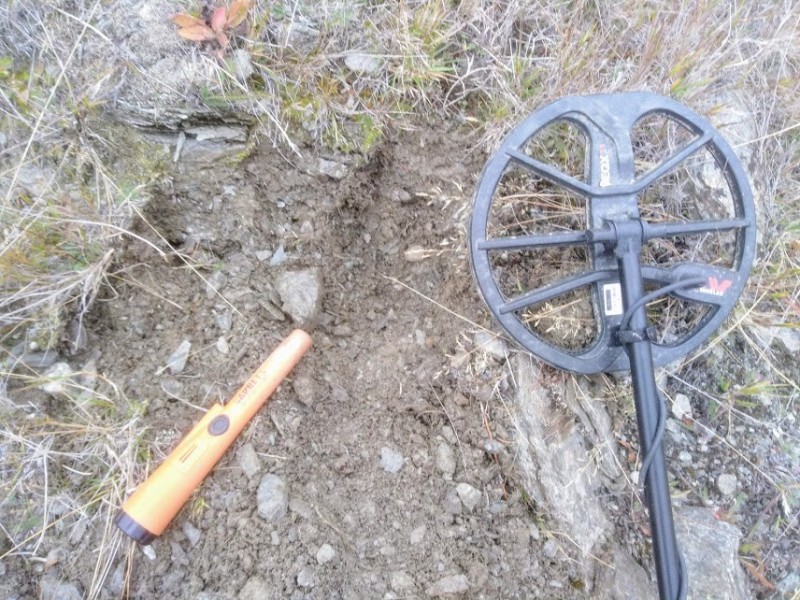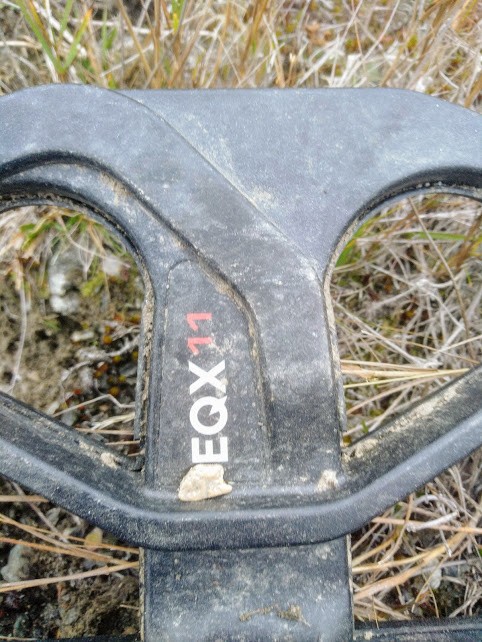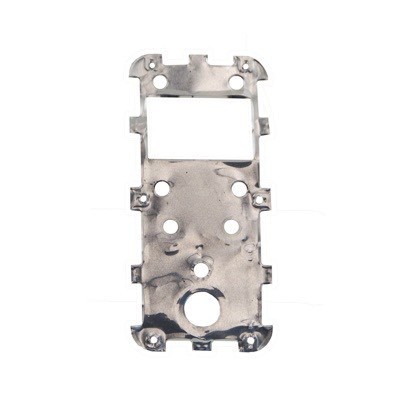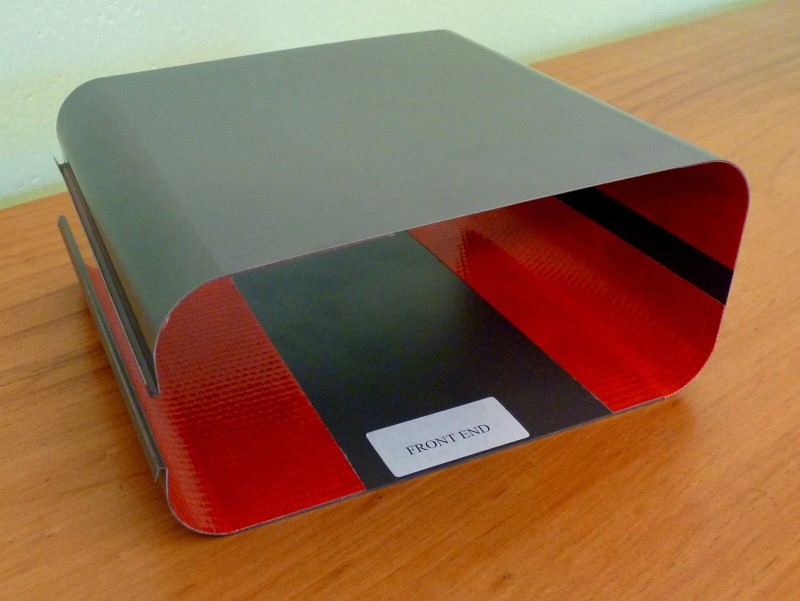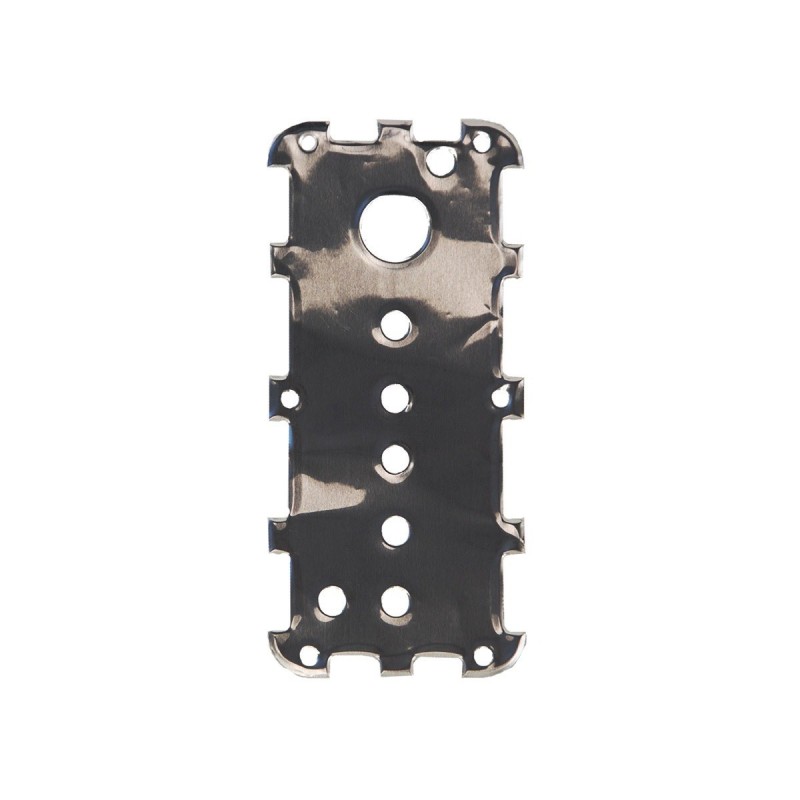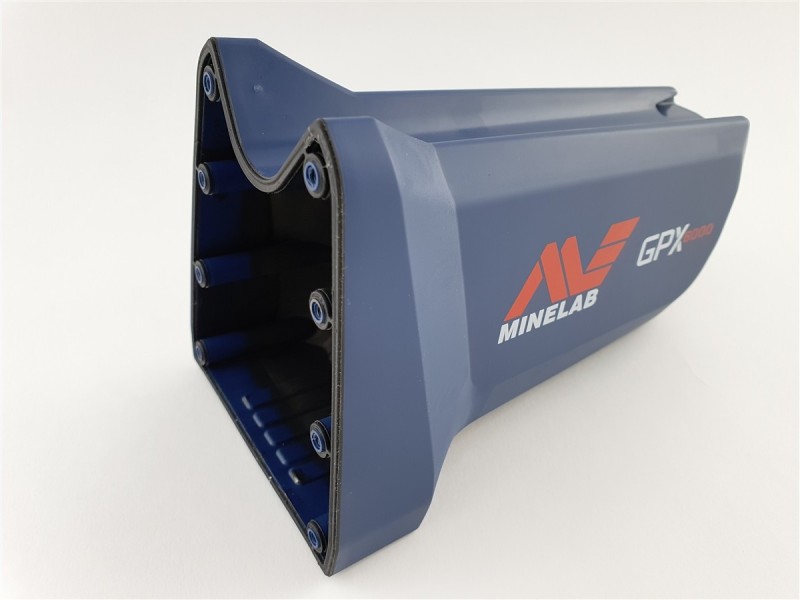Search the Community
Showing results for '"GPX 4500"'.
-
The idea has never been to produce a cutting edge product, a GPZ 8000, for $2000. Yes, development costs are real, and must be recouped. I have always been thinking GPX 4500, which last sold for $2699. Dealers cried when Minelab discontinued it. Development costs long since recouped. All it needs is to be repacked in a modern housing using a modern battery option. I’d be thrilled with something like that and have never asked for more on this thread. Minelab can do this easily. Minelab discontinued the machine since, as a monopoly, it was undercutting sales of the $3999 GPX 5000. Solution? Discontinue 4500 so you have to buy the 5000. That’s what lack of competition gets you. The 4500 always was and still is Minelabs ace in the hole, that allows them to stop any threat by Nokta dead in its tracks. Maybe Nokta has figured this out? Whatever, we will get there, and not too much longer. The fire of competition is doing its magic in VLF as I type. A match has been lit to PI and people like me will continue to fan the flame until somebody fills this massive hole in the detecting market.
-
Under 4 Pound, Under $2000 Gbpi Challenge
phrunt replied to Steve Herschbach's topic in Metal Detector Advice & Comparisons
Steve makes a good point about the 4500, they could repackage that and head off any competition at the pass a bit like the X-Terra coming in to make the new Simplex rehashes redundant. If they ever made a lightweight GPX 4500 in a modern new housing it would be a great seller if it was at the right price. They could even trim the 4500's features down a bit seeing it's so close to the 5000 and come in at a really good price. I'm sure there are people at Minelab that's job is just this, trying to stay ahead of the competition in all areas. I don't care who does it will benefit greatly from doing so, especially if it appeals to more than just the gold market. -
I’m somewhat amazed that over six years after I issued this challenge, nobody has won the prize. If anything, we have gone backwards, since the White’s TDI took away a model that met the criteria but unfortunately lacked the horsepower. Among major manufacturers that leaves us with the new Garrett Axiom as being as close as we get. I’ll give them a win on the weight at a perfectly balanced 4.2 lbs. The SDC 2300 is currently the only other option, better on price, but horrible ergonomics. This is where we are in 2023 as far as the challenge and the major producers: Fisher - no ground balancing PI being offered Garrett Axiom 4.2 lbs $3995 Minelab SDC 2300 5.7 lbs $3399 Nokta - no ground balancing PI being offered XP - no ground balancing PI being offered Axiom weight is good but price is still twice my targeted US$2000. It is therefore still an open challenge with only Fisher and Nokta in the running at this time. The Impulse Gold might get announced by the end of this year if we are lucky, and never if we are not. And we have no idea what the price will be. If the ergonomics match the Impulse AQ we will have a winner in that regard, but I’m worried Fisher will look at the Axiom and SDC price and come in at like $2995 just because they think they can. That would be a move in the right direction, but still too high. They are still selling the prototype Impulse AQ at $1700 though, so there is hope. That leaves Nokta, but not a peep out of them on the subject since just over a year ago, when the detector was only in the pencil to paper planning stage. A year is not long enough to get a new detector done when starting from scratch, but maybe it’s possible by 2024. Or does Minelab pull a “Xterra Pro” and head off everyone with a repackaged GPX 4500 for MSRP $2495 with an out the door price near $2000 ? It could happen, and Fisher and Nokta better get with the program or see this opportunity fade away. Me, I don’t care who does it, as long as it gets done. Until then I’ll use the Axiom as being as close as we can get at this time. It’s my way of supporting those who make progress to this under 4lb under $2K goal, and if anyone gets even closer I’ll look hard at using what they come up with instead. It merely need be as good as the Axiom, but at a lower price. Garrett met my minimum power needs, met the ergonomic challenge, but I’m disappointed at the price. That alone is keeping Garrett from selling the Axiom by the truck load. Garrett Axiom, 4.2 lbs, $3995
-

Axiom Not Detecting Test Piece
Steve Herschbach replied to Dain Blackburn's topic in Detector Prospector Forum
I do not know of any extensive comparison tests done between the Axiom and GPX 4500 so there is also a not zero possibility the 4500 can detect that nugget better. Please do report back on what Garrett’s findings are with the machine. I’m less than thrilled so far by the reports of defective units. Yeah, Minelab really dropped the ball with the GPX 6000 in that regard. But so far I’m not impressed with the failures I’ve heard about from Garrett owners either. Can’t anyone make things correctly anymore, and more importantly, do proper quality control before units are shipped? -

Axiom Not Detecting Test Piece
Steve Herschbach replied to Dain Blackburn's topic in Detector Prospector Forum
You don't mention the nugget size so hard to say. The Axiom will hit gold down to 0.03 gram in the field, with 0.06 gram and larger being common finds. The smallest bits will only signal on the edges with the mono coils (this is normal with all mono coils on all brands), with each of the four corners being the hottest spots. So when you say heel of coil only, well, it should not be heal only, but on the tiny bits maybe more like edges or four corners only. As nuggets get larger the signal will pull away from the edges and go to the center. The Focused Core DD coils are hottest in the center of the coil. Unless you are comparing directly to a GPX 4500 its memory only at work. Nuggets vary greatly in how well they can be detected due to purity, shape and orientation, and porosity created by air spaces or rock inclusions. I agree however with Gerry that an Axiom in general will hit as well or better than a GPX 4500 on small gold. But again, on solid relatively pure bits, 0.06 gram and larger should be easy finds, with experts getting down to 0.03 gram surface bits. The nuggets below were found by several different operators using the Axiom in Australia and are in the range I am describing. My own personal commentary to the casual inquirer would be to expect to be able to find nuggets down to 0.05 gram. You'll have to be on top of your game to be hitting gold smaller than that. A smaller mono coil would be welcome in helping with that, something like the 6x8 Sadie would be fabulous, but so far no aftermarket coils have appeared. -
I do find it tracks out really tiny bits, but you can get them back again with a ground balance or even swinging off to the side of your dig for a bit but they're probably a bit smaller than your gold Dave I think our hot rocks are basaltt? Well I've been told they likely are by images of them but the 6000 has a lot of trouble with those particular ones, the GPZ had trouble with some green hot rocks we have too. Both are highly magnetic. We do have a few volcanoes dotted around though that according to my research threw out a lot of basalt. The best for me and hot rocks has been the GPX 4500 and 5000. The two closest to me are extinct now, the North Island is home to all the active ones and lots of them, the ones closest to me threw out a lot of basalt and surrounding them is filled with it. They even have Taupo supervolcano that is twice the size of Yellowstone so if that ever blows.... White Island is the one that blew up two years ago killing a heap of tourists that were checking it out. 😞 This is a basalt outcrop they call the organ pipes at the Volcano nearest to me. Pretty cool how the lava formed like this. My soils maybe often pretty mild but hot rocks are my issue.
-
I guess what could explain what you're seeing is if with the 17' coil being larger they didn't need to do the semi spiral windings and were able to lay them out completely flat now as a full spiral coil not in layers on top of each other like the 11". This would likely give the sensitivity increase that you're experiencing that allows it to somewhat keep up with the 11" coil. I've run a lot of coils on my GPZ and older model GPX both bundle and spiral (flat wound) in a variety of different sizes, often the exact same coil size with different windings to see the real world differences between a coil being bundle and spiral and I'm sure many owners with an older model GPX have run say a 14x9" mono bundle coil and then a 14x9" mono spiral coil and seen first hand the extra sensitivity the spiral coil gives them. I first run a semi spiral coil like the GPX 6000 has on my GPX 4500 when X-coils released the 12x6" coil for it which was their first Semi spiral coil as spiral windings wouldn't fit and they wanted a coil more sensitive than bundle windings so they made the 12x6" Semi spiral for the GPX 4500/5000, the same winding design was later used in the GPX 6000 coils. We need @strick with his super-dooper X-Ray machine to X-ray the 17" coil to really get the answers. 🙂 It would explain the almost comparable sensitivity levels you're talking about. I haven't seen the two coils having similar performance on small gold here in my brief encounter with the 17" seeing it miss targets that were easy for the 11" but my grounds very different. I haven't seen JW use that coil since that day. The detectors not hindered by soil in my mild soils so much so I guess in optimal conditions the 11" can shine over the 17", weaken the more sensitive performance of the 11" with some bad soil and whatever Geosense does because of this and perhaps the gap in performance is less noticeable. The more sensitive a coil the more it needs wound back in difficult ground to work optimally. Much like the 14x9" Coiltek coil, I find that very weak on small gold compared to the 11" and 10x5" coil. Some in Australia have said it's almost the same.... I could not disagree more so much so I never use it and may end up using it as a "sacrificial coil" to get its chip out..
-
Who Has Had Issues With Their Gpx 6000?
phrunt replied to Goldseeker5000's topic in Detector Prospector Forum
Too true, I don't ever use my GPZ Minelab coils, both my 19" and 14" coils are basically new just used them to test if I wanted to use them, My GPX 4500/5000 Minelab coils are still basically brand new and as found out quickly I didn't want to use them 🙂 My 6000 coils are now closet queens, except the DD as I need it for it's EMI handling sometimes, If I had an option to buy my detectors with no coils I'd certainly do it. -
I see the Minelab GPX 4500 is being discontinued. If the price goes down is it worth it to pick one up or has what replaced it that much better? Perhaps a premium will now be asked for the remaining new GPX 4500's? Is now the time to buy??
-
The Minelab GPX 4500 detector was released in 2008 and discontinued in February 2021. The GPX 4500 is a pulse induction (PI) metal detector aimed primarily at the gold prospecting market but which has become popular also with relic hunters. Note that the sale price of this model normally includes two search coils, an 11" round DD plus an 11" round mono coil. "Return of the Legendary Gold Detector! The versatile GPX-4500 is a proven gold finder with many features and great performance. Incorporating Minelab’s superior Multi Period Sensing (MPS), Dual Voltage Technology (DVT) and Smart Electronic Timing Alignment (SETA) technologies it penetrates mineralised ground better and deeper than basic PI detectors." Source: Minelab website Minelab GPX 4500 metal detector MPS, DVT & SETA technologies for superior gold detecting performance. 2 coils supplied: 11-inch Double-D for general use AND 11" Monoloop for deeper detecting Versatile Timing settings for various ground conditions. The Enhance timing is a powerful feature, similar to the Sensitive Smooth timing, but provides an improvement in the depth and signal response on small and large targets alike. The Sharp timing is more suited to quieter soils and can also help to pinpoint faint targets. Six pre-programmed search modes for easy switch-on-and-go detecting. All six search modes can be modified with your favourite settings and renamed. Stabilizer control for the smoothest threshold. In noisy conditions, turning it down will provide you with a smoother threshold. In quiet conditions, increase the stabilizer and faint target signals will be more obvious. Ground Balance OFF for neutral soils. This is a useful feature for very benign low mineralised or salt saturated soils. This setting will also work well for treasure or relic hunters in loam or sandy soils. Backlight with adjustable time-out to preserve battery life. Target Volume allows you to increase the strength of softer target signals. This is useful in windy conditions, for people suffering from hearing loss, and to adjust the audio volume when using external speakers. This can also provide an audio boost in mild soils, and can be used to smooth out ground noise signals in highly mineralised soils. The Iron Reject function allows you to set the desired level of discrimination, from cautious to aggressive. This enables detecting in areas with high levels of ferrous junk. Built-in amplifier so you can hear soft target signals from deeper nuggets, more easily. The Li-lon battery pack includes a built-in audio amplifier, allowing you to use an external speaker without the need for any external booster. Official Minelab GPX 4500 Product Page Minelab GPX 4500 Owner's Manual Minelab GPX 4500 - Steve's Review GPX 4000 - 5000 Timing Charts Forum Threads Tagged "minelab gpx" Minelab Metal Detector Forum
-
The Minelab GPX 4500 detector was released in the spring of 2008, and discontinued in 2020. The Minelab series of pulse induction (PI) metal detectors starting with the SD 2000 are widely acknowledged as being some of the most powerful gold nugget prospecting detectors currently available. The GPX 5000 is the latest and most refined in the series but the GPX 4500 is only just a step behind it in features and performance. See Steve's Guide to Differences of Minelab SD, GP, & GPX for details. The GPX 4500 created a page in gold rush history by being singled out as the detector of choice in Africa for some time. Many large nugget finds were made there with the new GPX 4500 and starting around 2009 demand far exceeded supply as African prospectors were willing to pay any price to get what they believed was the only detector capable of possibly making them rich. Buyers in the U.S. drove prices far over retail due to extreme demand and these units were resold in Africa for prices well exceeding $10,000 per machine. This amazing demand was almost single-handedly responsible for driving Minelab sales and stock prices to all time highs. When the GPX 4800 and GPX 5000 were introduced Minelab stopped selling the GPX 4500 in the U.S. and Australia but demand was such that it continued to be sold in Africa. Finally, in 2015 the GPX 4500 was reintroduced for sale again in those countries as an entry level pulse induction model (for Minelab) priced at less than half what the GPX 5000 sells for. This makes the GPX 4500 an exceptional value at this time. Minelab GPX 4500 Pulse Induction (PI) metal detector for gold prospecting and more I got my own GPX 4500 in 2008 and saw many others in use at my old mine at Moore Creek, Alaska. The GPX 4500 made the ground light up like it had never been hunted with many nuggets found in already detected locations. Here is my report at the time about what I observed at Moore Creek: "I have run a little pay-to-mine operation at Moore Creek for four years now. We have old tailing piles that have nuggets in them. Some piles produced quite a few nuggets, and so everyone and their brother has been over them hoping for just one more. For instance, Dean's Hill. Dean found a 6.54 oz nugget a mile below camp on a pile. Rich Lampright found I think about 6 more ounces of smaller specimens on the same pile. Anyway, well over a pound came off this one pile. Now, these piles are small hills. You might be talking 300 feet long by 100 feet wide by 40 feet tall. Big but not something a person can't cover every square inch of. There have been probably 50 people hunt Dean's Hill using everything from the SD2200 on up to the GP3500 and probably a GPX-4000 or two last summer. There are other hills with similar reputations, including Bud's Island right near camp. Over 100 people have hunted it since it is so near camp. So the guys show up this year with the GPX-4500. A determination was made almost immediately that all ground should be treated as virgin again, and sure enough nuggets started coming out of Dean's Hill and Bud's Island and other places that were well and truly "hunted out". It was simply way too many nuggets to chalk up to anything other than the GPX-4500 being able to hear nuggets previous units could not hear at Moore Creek. ads by Amazon... I attribute this to two things. Previous SD/GP units had a tendency to sound very faintly on hot rocks at Moore Creek. So you got to where you usually ignored those sounds as they were almost always rocks and listened for something just enough different to indicate a real target. It is possible with the GPX to completely and absolutely tune out those faint hot rocks, allowing whisper faint nuggets to be detected. They might not actually be deeper per se, it is just that you could not discern them before. Same difference as far as I'm concerned. Plus, with the Gain and extra timings you can crank the GPX up for some insane performance. Steve F got his biggy by running the GPX up to the point where the ground was super noisy. You'd not normally hunt that way but he was focused on one spot, and it did allow him to get an exceptionally deep target. The bottom line is I am absolutely convinced the GPX is doing stuff that could not be done before. It was too many people getting too many nuggets out of too many hard hit spots to be anything else. There is no doubt in my mind that money spent on a GPX-4500 is money well spent. Remember, though, it can't make the gold. We had a couple GPX users who simply could not seem to get over nuggets. Anyway, hopefully Rob and Glenn and Steve and other Moore Creek visitors will chime in here with some of the settings they were using at Moore Creek to help little old me out. I am headed back up to Moore Creek August 8th to prep ground for next season but plan on firing my new GPX up for the first time finally. I gave away everything I found in June so it would be nice to have at least one nugget to call my own this summer!! Any tips would be most welcome. Steve Herschbach Moore Creek Mining LLC July 25, 2008" Gold found with Minelab GPX 4500 at Moore Creek, Alaska in 2008 - largest nugget 3.5 ounces The was a period of time after the GPX 4500 was discontinued in the United States that the GPX 4800 and GPX 5000 were the only two PI models available from Minelab. Garrett introduced their new Garrett ATX at less than half the price of those detectors. It was a bargain at $2120 compared to almost $6000 for the GPX 5000. I do not know this for a fact but I believe that Garrett had something to do with the GPX 4500 being reintroduced for sale. The GPX 4500 at $2699 with two coils was close enough to the $2120 ATX with one coil, that it pretty much stopped the ATX dead in its tracks as a prospecting detector. Up until that point I had been recommending the Garrett ATX as a bang-for-the-buck alternative to the much higher priced GPX uits. Given the extra power and versatility of the GPX 4500 at the new lower price, and the GPX 4500 is now my recommendation for anyone wanting a "bang-for-the-buck" new full warranty high power PI for gold prospecting and possibly even beach or relic detecting. Official Minelab GPX 4500 Page Minelab GPX 4500 Instruction Manual Minelab GPX 4500 Product Brochure Minelab GPX 4000-5000 Timings Charts Difference Between Minelab SD, GP, and GPX Models Forum Threads Tagged "minelab gpx" Minelab Metal Detectors Forum Minelab GPX 4500 Technical Specifications* Internet Price $2699.00 Technology Ground Balancing Pulse Induction (GBPI) Frequency 1100-4500 PPS? Autotune (Motion) Mode(s) Very Slow, Slow, Medium and Fast Ground Rejection Slow, Medium, Fast Tracking, Fixed, and Off Soil Adjust Six settings (timings) - see chart below Discrimination Variable 1-10 and Off in Menu Volume Control Variable 1-20 in Menu Threshold Control One turn control Tone Adjust Variable 1-100 in Menu Audio Boost Quiet, Normal, Deep, Boost in Menu Frequency Offset Automatic Tune plus Manual 0-255 in Menu Pinpoint Mode No Audio Output 1/4" headphone socket (No speaker) Headphones supplied Hip Mount Shaft Mount Only Standard Coil 11" round DD and 11" round Mono Optional Search Coils Over 100 accessory coils available Battery Rechargeable 7.4VDC 9.2A/hr Lithium Ion Operating Time 14 - 15 hours Weight 5.3 lbs (w/11" coil, excluding battery (1.7 lbs) Additional Technology Multi Period Sensing (MPS) Dual Voltage Technology (DVT) Smart Electronic Timing Alignment (SETA) Numerous Audio Adjustments via menu Coil (Double D/Mono/Cancel) - 3 pos. switch Notes The GPX 4500 employs an external battery carried on a backpack harness and connected to the control box via a power cord. The detector is normally suspended from the harness with a bungee cord, allowing for nearly weightless operation in level ground. *Notes on Technical Specifications - Detailed notes about the specifications listed in this chart.
-
Greetings from the UK to all you fellow hunters from a newbie to the GPX 4500 and this site , i have a question i recently i acquired a Gpx 4500 and it has a modification on the control panel which i am not sure about could somebody tell me what this is ? as you can see in the picture it says Gain + and L.S.M three position switch what is this and how do you use it and who would have modified it if known ? my hunting will be 99% on wet beach sand had an SD 2200D way back which was awesome on the beach so GPX should be no exception. Any help and advice will be very much appreciated and any advice on a beach set up would be good as i not tried her out yet many thanks .
-
This is a good Q&A on the GPX 6000 for those considering one, Nenad was a field tester for it and knows what he's talking about. I found what he has said in his Q&A here very agreeable. https://phasetechnical.com.au/minelab-gpx6000-gold-detector-qa/ I like that he makes the case for the various detectors and honestly talks about their strong and weak points. Now the GPX has it's known issues resolved it really is a good detector and I really like mine, as is the GPX 4500/5000 he also talks about and of course the GPZ 7000 is great, and in my mind the best there is.
-
Yea, it's a fair bit different here, someone can only have a VLF and still do quite well. It may not look it from the hole in the photo but the nugget was down just over the depth of the Carrot. I was using the Nox in this spot with the 11" coil to cover ground well and using it to block out hot rocks as the GPX 4500 I also had at the time was really struggling with them, or I should say I was really struggling to use the GPX because of all the hot rocks 🙂 I did quite well this day and got a few, the previous couple of visits to the spot with the 4500 I was skunked and spent my days digging hot rocks. In hindsight I should have tried a DD coil on it rather than the 14x9" EVO I was using. I haven't even had my GPZ there, nor my 24k or Manticore obviously. Might have to go again soon before too much snow hits. 1.2 grams.
-
Gold Detector
RONS DETECTORS MINELAB replied to Karl48's topic in Metal Detector Advice & Comparisons
Lots of people are selling their older model detectors for the newer models coming out. I guess it’s like having packrat syndrome, must have the shiny and new. This opens up a good opportunity to get some good detector prices for people on a budget. As a dealer and trainer I get asked a very good question by a lot of customers on what prospecting detector would be best for them. My answer is usually what is your price range and how mineralized is the area you planning on prospecting? How much rubbish is in the area your detecting? If they are new to prospecting and not sure where to even go, I recommend them doing some research on the mining districts closest to them. My usual recommendation for their best chance of finding nuggets is to get a PI detector when in medium to heavy mineralized ground or a VLF with a very good target VDI for low mineralized ground in rubbish littered areas. Usually the PI detectors exceeds there price limit. There are options for used PI detectors at VLF pricing, but this comes with risk by not having any warranty. I recommend only keeping a detector that’s under warranty due to the high price of repairs, but do understand there are some really good prices on used detectors also, such as the GPX-5000. The following list is just a recommendation from my experience using a majority of these detectors on what will work for nugget hunting. I am not saying price always determines the best performance due to many variables in metal detecting. This is not a debate on detector performances as it is more about what price to expect to pay to get into this hobby. All the VLF’s listed here can or should pass the bic pen sensitivity test. There are many more comparable models out there, but these were probably some of the lower priced prospecting detectors I have found for the money. Just a few Detectors for light mineralization and a low price where a VLF can work well: $289,00 Minelab X-Terra Pro 3 year warranty. Has ground balance. I recommend nugget hunting in Park 2 15Khz mode for best sensitivity. Also a multi-purpose detector. Great price and also can use Equinox coils. Fisher Gold Bug newer Digital w 5 inch coil 19Khz. 5 year warranty. Fisher F19 w 6 x 10 inch coil package. 19Khz 5 year warranty. Nokta Legend Pro Pack w 6 inch coil package Multi Freq. 3 year warranty. Also a multi-purpose detector. Nokta/Makro Gold Kruzer w 4 x 7.5 and 5.5 x 10 inch coil package 61Khz. 3 year warranty. Garrett 24K w 6 x 10 inch coil 48Khz. 2 year warranty. Fisher Gold Bug 2 analog or digital w 3 x 6.5 inch coil 71Khz. 5 year warranty. This detector is probably a specialty detector with the most sensitivity for cleaning up the smallest leftover nuggets. If you need more sensitivity then the GB2 then probably recommend the Gold Falcon MD20 pin-pointer 300Khz. Minelab Equinox 800 w 6 inch coil Multi Freq. 3 year warranty. Also a multi-purpose detector. Very versatile. Many other used VLF models can come in well under $500.00, but with no warranty probably better to buy a new model for the price difference. For medium to heavy mineralization, a PI is really necessary to have the best success: Weight is usually the downside to PI detectors until the last few new releases. So weight is included on the PI list. Expensive Options! A used GP 3500 can be found for less than $1,400, ATX for less than $1,500, GPX 4500 for less than $1,700, and GPX 5000 for less than $2,000. Most likely non warranty, but these older PI’s were built pretty solid. Maybe others can describe the best options for your areas mineralization though. -
Ask JP. Jonathan Porter. Queensland is his back yard. He may see this & chime in, but don't hold your breath as I have noticed he hasn't been on here in ages. You could try message him directly. He is a Minelab tester, dealer/agent. You would most likely be better off with a pulse induction detector as has already been mentioned due to hot ground that the cheaper vlf's dont like. Because they are cheaper doesn't necessarily mean they are no good. Just given a hard time by mineralised ground. My vote for a "cheap" but usually very good vlf in mild type ground would be the gold monster & the Nox 800. If you are also keen on jewellery & relic hunting then the nox 800. For a PI that might be within your budget a 2nd hand GPX 4500 or 5000. Good luck. D4G
-
I've used the Quest Wirefree on my GPZ with no issues, it's latency isn't as fast as aptX LL however it's more than adequate for a gold detector. It's range is better than the WM12 that came with the GPZ too. I've used it on my GPX 4500 too with no problems. The 2.4ghz wireless has a better range and stability than Bluetooth. I purchased mine from Nenad, always a smooth easy transaction with Nenad, I wish he was a NZ Dealer 😉
-
Will The Next Gen Detectors Address Emi ???
phrunt replied to dogodog's topic in Metal Detector Advice & Comparisons
I watched a TV show on Antartica meteorites once, it's the easiest place to find them, dark colours really stand out on white and it's not soft snow, it's often rock hard ice. If I encountered one I'd likely call it another stupid hotrock and kick it away, I doubt I'd recognise one. We've had a couple of them in NZ already this year caught on CCTV cameras with the bright flash and object flying across the sky. I've only seen two in my lifetime, one quite big one in Brisbane, Australia at about 3am after getting off a plane, we were driving back from the airport to the mother in laws house, no cars at all on the road, most properties with lights out, the place was asleep and a massive flash that I thought a speed camera got me, then we see the object flying in the sky but it's angle looked like it was going to hit the ground pretty close, it wasn't going across the sky more coming downwards.. The other I was just sitting in my Spa at night time again in Brisbane and there was a much smaller flash and an object flying across the sky on a downwards trajectory. Nothing at all like the previous one I mentioned though. I'd love to find one, I doubt I ever will. I think EMI mitigation is the final frontier for metal detectors, many in the know have commented depth levels have been maxed out for years, target ID stability was maxed out with the CTX and now we are heading backwards to less stable to improve other aspects of detector performance I guess, tiny gold performance peaked with the GB2 back when I was a school kid. EMI seems one area where improvements could be made, and in a way have to be made as EMI gets worse every year for almost every detectorist. Frequency shifting to me seems the best solution for VLF's, and now with most modern detectors being multi frequency they have coils more suitable for moving frequencies. They should be able to establish during a "EMI noise scan" procedure which frequencies in their pre-programmed modes are being affected by EMI and shft off them slightly until the noise clears while leaving the quiet frequencies alone. Older detectors like the T2 where I do my frequency shift in a previous video on this thread perfectly demonstrate how well frequency shifts work, even tiny ones like the T2 has under 1kHz can make a huge difference. I don't think we should get used to these lightning fast 3-5 second noise cancels though, good things take time and the most effective detectors at the moment for noise cancels take time, the GPX 4500 seems like it takes about a minute if not more to go through its 254 channels while you're holding your heavy GPX coil up in the air. The GPZ 7000 although slightly quicker still feels like about 30 seconds. Both these detectors recommend you hold your coil up above the ground. I personally have found noise cancels most effective holding coils above the ground in maximum sensitivity to get the most EMI into the detector, then after it thinks its done as good as it can with the noise cancel I move my sensitivity to the desired level. -
Could it be the self generated EMI hindering performance? They may have sounded about the same but doesn't mean they are. I always felt my GPX 6000 did better after it's EMI mod fix. It really makes you wonder though, some people like Woodys GPX 4500/5000 mods, others think they don't do much at all if anything. JW has a GPX 4500 with woody mods and he seemed to like it over a stock one from memory. I just can't understand how smart people that are capable of making a GPZ 7000 could make such a simple mistake that a minor shielding change alters performance so much so I have my doubts about the mod so far without more information. The 6000 was different, it was a part that for some worked fine, others not, so inconsistency in components and all those testing it perhaps had good ones and it's when hundreds get out into the public's hands the dodgy ones showed their ugly faces. Minelab should have done all they could to get their hands on a noisy one being returned under warranty and troubleshooting the cause though, it shouldn't have taken a year or more to work it out other than they didn't want to and were hoping the problem would just go away. Maybe they just thought it was a bad run of components that would sort itself out with no change to anything without even working out what is the cause as a new batch comes through with the problem solved and those with the bad ones will think it's normal, pretend the problem doesn't exist and it will go away. Maybe they're just always leaving some fuel in the tank for the next model, I can see it now.... GPX 8000, 3" more depth on a test nugget (20 cent coin in this case) over the GPZ 7000. 🙂
-
I just got a SP01 from Rob. Anyone have a favorite filter setting (1,2 or 3)or setup? I’m using it on a GPX 4500
-
These are reviews on metal detecting and prospecting equipment I have personally used over the years. In the last 50 years I have used a lot of metal detectors and prospecting gear! A lot of items are not made any longer but may be found used. In each instance my goal is to provide details and commentary not found anywhere else. For more user reviews of metal detectors visit the new Metal Detector Database. Do not miss Steve's Guide to Gold Nugget Detectors for honest opinions on gold nugget detectors updated on a regular basis. Visit the Detector Prospector Forums for expert advice. User Guides & Catalogs here. Fisher CZ Models - Some old favorites. Fisher CZX - Speculative new detector model.... Fisher F19 - General purpose VLF detector with prospecting mode. Fisher F75 - Flagship VLF model with prospecting mode. Fisher Gold Bug 2 - Dedicated VLF prospecting detector, extremely hot on small gold. Fisher Gold Bug Pro - Excellent value general purpose VLF prospecting detector. Fisher Manta - New pulse induction beach detector in the works at First Texas. Garrett AT Gold - Excellent value waterproof VLF prospecting detector. Garrett ATX - High performance pulse induction beach and prospecting detector. Garrett Infinium LS - Pulse induction beach and prospecting detector. Minelab Equinox 800 - General purpose detector with prospecting mode. Minelab Eureka Gold - Dedicated VLF prospecting detector, three selectable frequencies. Minelab Gold Monster 1000 - Dedicated VLF prospecting detector, extremely hot on small gold. Minelab GP 3000 - High performance pulse induction prospecting detector. Minelab GPX 4500 - High performance pulse induction prospecting detector. Minelab GPX 5000 - High performance pulse induction prospecting detector. Minelab GPZ 7000 - New high performance professional prospecting detector. Minelab SDC 2300 - Pulse induction prospecting detector, extremely hot on small gold. Minelab X-Terra 705 Gold - General purpose detector with prospecting mode. Nokta/Makro AU Gold Finder - Dedicated VLF prospecting detector, extremely hot on small gold. Nokta/Makro FORS Gold - General purpose VLF detector with prospecting mode. Nokta/Makro FORS Gold Plus - Excellent value VLF prospecting detector. Nokta/Makro Gold Kruzer - General purpose waterproof gold prospecting detector. Nokta/Makro Gold Racer - General purpose gold prospecting detector. Nokta/Makro Impact - Flagship VLF detector with prospecting mode. Nokta/Makro Racer - General purpose detector with prospecting mode. Teknetics T2 - Flagship VLF detector with prospecting mode. Tesoro Lobo SuperTRAQ - General purpose VLF prospecting detector. White's GMT - Dedicated VLF prospecting detector, very hot on small gold. White's GMZ - Dedicated VLF prospecting detector, hot on small gold. White's Goldmaster 24K - Dedicated VLF prospecting detector, extremely hot on small gold. White's MXT - General purpose VLF detector with prospecting mode. White's MX Sport - General purpose waterproof VLF detector with prospecting mode. White's TDI - Pulse induction beach and prospecting detector. White's V3i - Flagship VLF model with prospecting mode. XP DEUS V5 - Flagship VLF model with prospecting mode. XP ORX - New model from XP with an emphasis on gold prospecting. Comparison Reviews Garrett ATX vs Minelab GPX 5000 Waterproof Pulse Induction Detectors Compared For more user reviews of metal detectors visit the new Metal Detector Database.
-
First Afternoon Using The Goldhawk 10x5 Mono
phrunt replied to Aureous's topic in Detector Prospector Forum
It's possible they have, modern electronics less prone to EMI interference, the shielding paint maybe all that's needed. On the older GPX with the thick foil on the ends with the metal housing they had really good shielding, yet the detector was far more prone to EMI than the 6000, so somethings changed. I'm pretty happy with my 6000 in higher EMI areas, such an improvement over older GPX's This is the foil ends off the old GPX under the plastic covers These are connected to the alloy housing, a mistake they made on early GPX 4500's was the blue paint for the housing went over the ends of the housing from being sprayed on, so this shield was touching the paint, not the raw metal thereby the shielding was poor relying on the screws, I scraped the paint off mine on the ends, and it improved it's EMI handling. I've noticed on my 5000 the paint isn't over the ends. I also have one of these which add extra shielding, many thought they're a gimmick but they're not, they do genuinely work, I did connect a wire from it to the shield by a screw terminal though, they don't mention you need to do this and you just put it on as a cover but it's the best way to connect it to the ground of the detector for best results. . It's a cool idea trying to improve the shielding, I'd like to see someone try and if they get any success that's awesome and the feedback should go to Minelab however I'm not sure how much extra shielding would help. With the right coil, I find the 6000 to be pretty good for EMI, especially for a PI and now the EMI Audio fix has been done. @GotAU? Are you using a Torus Neck speaker? It can cause the blips with it's aptX LL glitching when the data rate doesn't keep up so you get a blip or crackle as a broken signal, it's an acknowledged issue with them that can't be fixed and one of the reasons atpX LL is gone and Bluetooth LE now exists. Qualcomm that made aptX LL discontinued it to make aptX Adaptive which resolves this blip problem but it's not as good for detectors as it's latency being slower and moving around to different latency speeds depending on signal strength so Qualcomm is out of the detector game now with standard Bluetooth's new version now being better than a proprietary codec. The Torus seems more prone to blipping than any other aptX product I've got. -
First Afternoon Using The Goldhawk 10x5 Mono
phrunt replied to Aureous's topic in Detector Prospector Forum
It was easier with the GPX 4500/5000 where the screws holding the front and rear fascias on touched the alloy shielding and metal housing which was the floating ground. The 6000 housing shielding is very basic with just some shielding paint on the plastic housing, you'd really need to shield to the PCB, and can't without voiding warranty. So really, not much can be done. -
Thanks Norvic, im intrigued, i dont think I would have thought to approach the set up like that. There is way more variation in how the audio reacts to changing those three setting than I would have expected. (or compared to GPX 4500) I dont have any experience with the 6000 yet. What do you think about the clipped threshold Im experiencing? If I crank up the threshold to get the faint but smooth buzzing mosquito its too loud and dampens the sharpness of a target. The difference happens between 17-20. 16-17 having the clipped audio response to a target breaking into the threshold. I guess im attempting to replicate the sound profile of my gpx threshold. Also I havent been able ,thus far, to run up the sensitivity higher than 4 for any length of time to see how that changes the threshold quality.... its really fun to be learning a new machine
-
GPX 4500 Question - How To Verify Date Of Manufacture?
pax posted a topic in Minelab Metal Detectors
how do i find out the birth day of my 4500? Thanks for the help.

